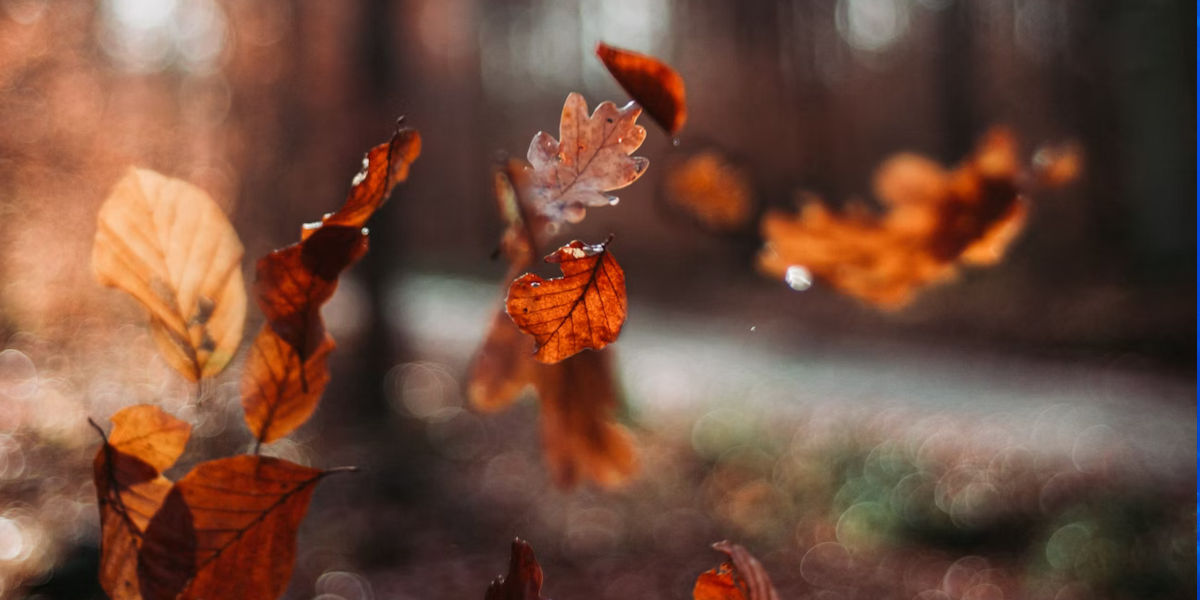As we bid farewell to sizzling summer days and welcome the sweet crisp breath of fall, nature presents us with a spellbinding spectacle: leaves changing colors, only to gracefully rain down, wrapping the world in a cozy quilt of rich reds, vibrant oranges, and warm yellows. But ever stopped to ask yourself, why do leaves fall in autumn? The veiled world of deciduous trees can be intriguing if we nudge ourselves to understand it. So why does this annual “fall fashion show” transpire? Allow us to spill the secrets!
Understanding Deciduous Trees
Deciduous trees are nature’s marvels. These trees, compared to their evergreen counterparts, go through a seasonal cycle of shedding their leaves, primarily to conserve water and energy during the harsher winter months. As fall approaches, the brilliant display of colors is not just a feast for our eyes but a fascinating scientific phenomenon begging to be understood.
It is noteworthy to mention that this process isn't a choice by the trees but a survival strategy finely tuned by nature over eons. During autumn, the days get shorter and colder, which translates into less sunlight for photosynthesis – the process by which trees convert sunlight, carbon dioxide, and water into food. The waning sunlight triggers a hormonal change in the trees, starting the leaf-dropping process.
The Science of Leaf Drop
As intriguing as it sounds, the science of leaf drop, also known as "abscission", is an intricately choreographed process finely attuned to the environment and seasonal changes. At the heart of this process lies a small layer of cells at the base of the leaf stem, called the abscission layer.
As daylight wanes and temperatures drop, this layer begins to expand and harden, slowly cutting off the leaf's access to water and nutrients from the tree. Starved of essential elements, the leaf's chlorophyll – the pigment that gifts leaves their summer green color – breaks down and reveals the other pigments hidden beneath it.
The Reveal of Hidden Colors
That’s right! The changing colors are not just nature's seasonal brush strokes. This process, often perceived as magical, is firmly grounded in the nuts and bolts of science. As chlorophyll degrades, other pigments that were previously masked by the dominant green, peek through.
The xanthophylls and carotenes (yellow and orange pigments) become visible first, as they are less sensitive to sunlight compared to the red and purple anthocyanins, which usually emerge later when sunlight further diminishes and temperatures drop even lower. This spellbinding orchestration of nature presents itself as the riot of colors we embrace each fall.
Decoding the Chemistry behind Falling Autumn Leaves
The catalyst of change in this magical process is the shorter, cooler days. Like a time-ticking clock, the arrival of fall signals trees to begin their preparations for winter. Photosynthesis, the process by which trees and other plants convert sunlight, water, and carbon dioxide into glucose (food for the tree) and oxygen, becomes less effective as the daylight hours shrink. This is primarily due to the declining intensity and duration of light, which is necessary for photosynthesis.
The green chlorophyll, which is crucial for photosynthesis, starts to disintegrate, revealing the hidden pigments of yellow (xanthophylls) and orange (carotenes). These pigments were always present in the leaf but were outshone by the abundant chlorophyll in the summer months. Consequently, autumn foliage takes on a warm and glowing palette, reminiscent of a cozy fireside evening.
The Physiological Process: Abscission
The physical act of leaf fall is known as 'abscission.' In the lead up to abscission, trees reabsorb essential nutrients from their leaves and seal the area between the leaf stalk and the tree trunk. As a result, a specialized layer of cells, referred to as the 'abscission layer,' forms. When this layer is complete, it severs the tissues that support the leaf, leading to eventual leaf fall.
Every leaf's drop marks the silent fall of another powerhouse of photosynthesis. However, this humble act of letting go is a strategic move for trees' greater good. By shedding their leaves, deciduous trees minimize water loss and curtail the amount of energy they need to survive - a testament to their evolved survival tactics during the colder, harsher months.
Importance of Leaf Fall for the Ecosystem
While we marvel at the beauty of fallen leaves carpeting the ground, this spectacle plays a vital role in the ecosystem. The leaves decompose, enriching the soil with nutrients—serving as natural compost. These nutrients are then reabsorbed by trees and plants during the growing season, thereby replenishing the ecosystem, and ensuring the lifecycle continues unbroken. This process is a stark reminder of the intricate relationship between every living thing and the changing seasons.
In conclusion, the secret behind autumn's falling leaves lies in nature's brilliant adaptation strategy. A combination of chemical and physiological processes blended with evolved survival tactics results in the heartwarming scenes we associate with the fall. As the season of harvest and gratitude, autumn teaches us the core lesson of life and survival - sometimes letting go is necessary, not just for personal growth, but for the preservation and nourishment of the larger ecosystem.




